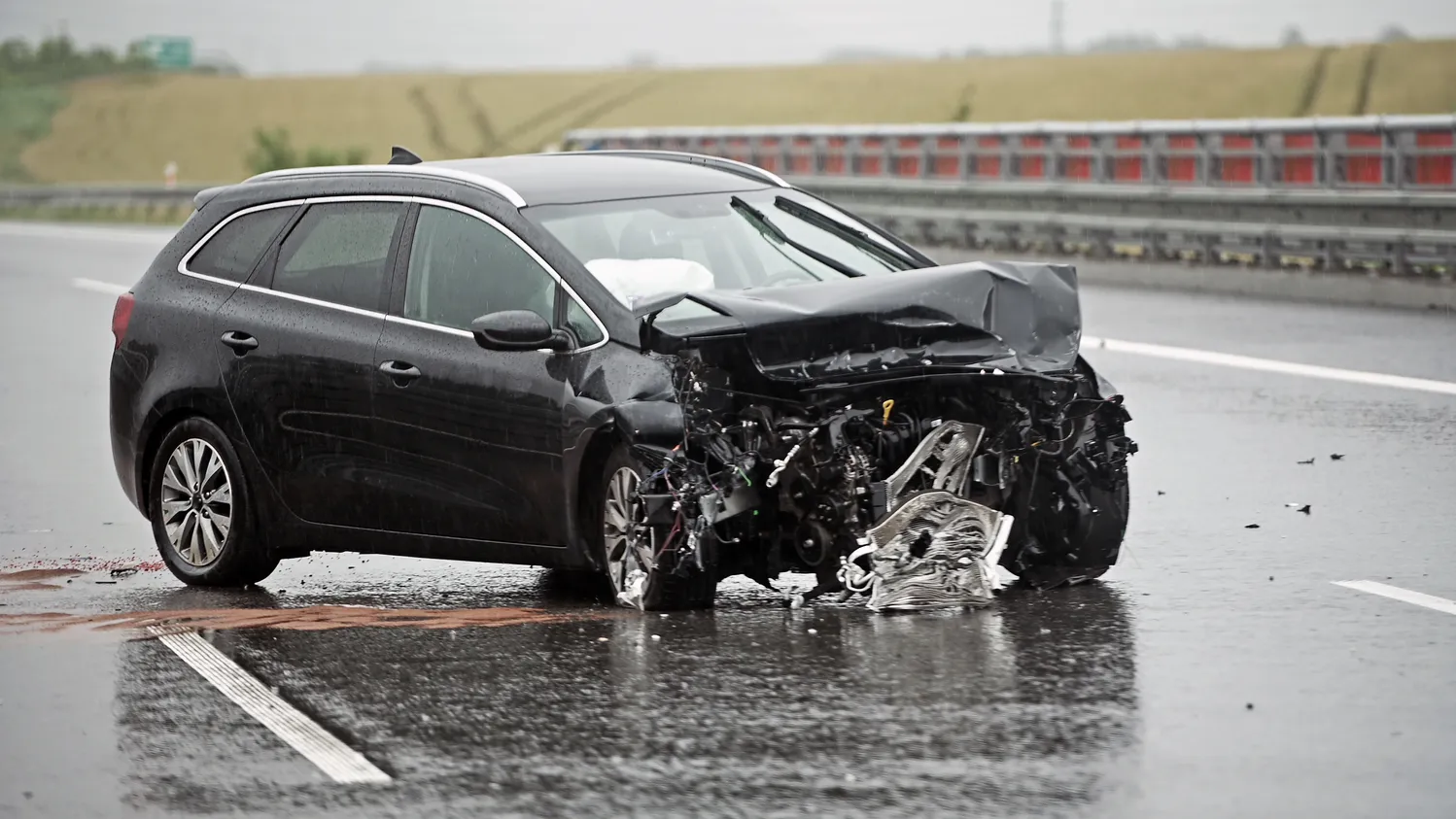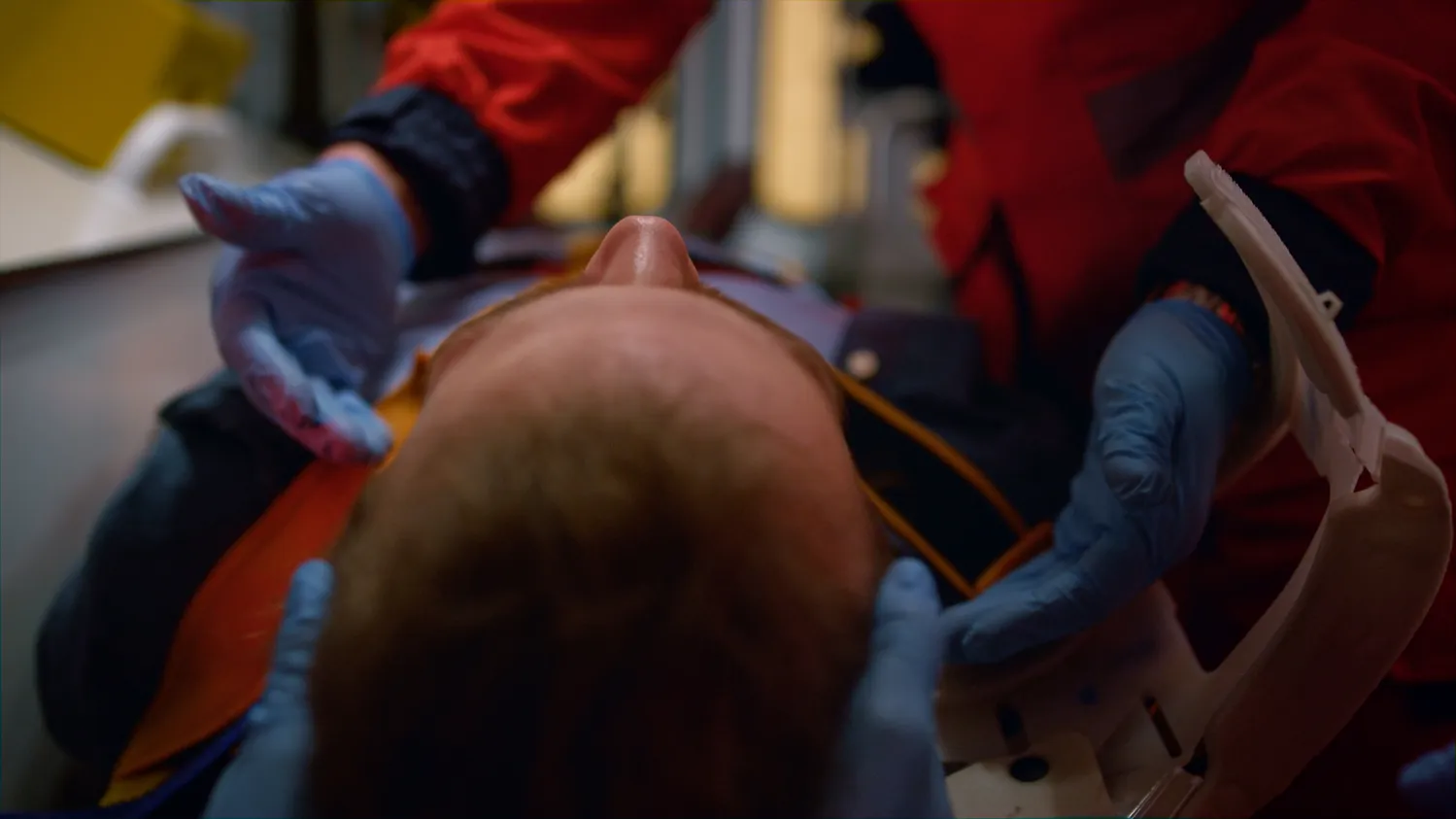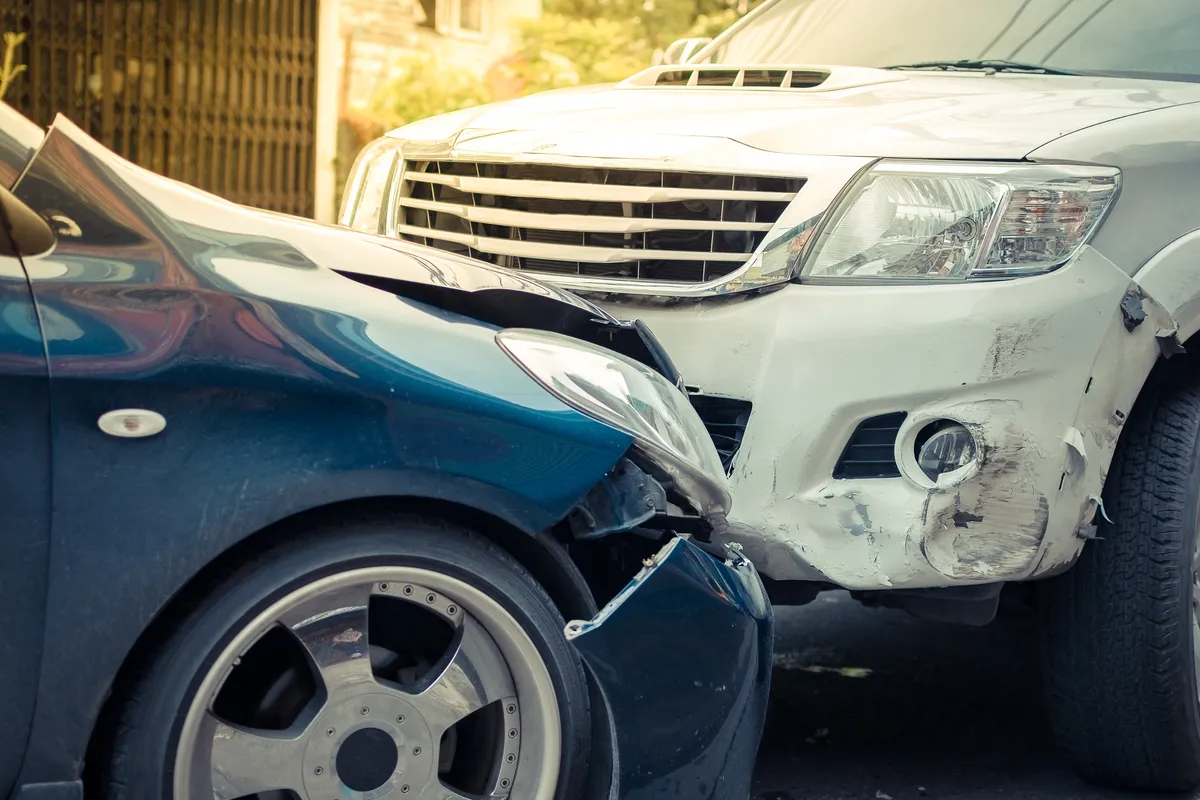7 min read time
Table of Contents
Out of all the types of car accidents, Head-on crashes are the deadliest, making up around 14% of all fatal crashes in the U.S., according to the FHWA.
This makes head-on collisions a dangerous and devastating form of car accident that can result in life-changing injuries and lasting financial damage.
This article provides in-depth details into head-on car accidents that you may use to prevent, teach, or avoid head-on crashes.
What Is a Head-On Collision?

A head-on collision occurs when the front ends of two vehicles collide. It usually results in a high-impact force, which can be fatal to the drivers involved.
Science Behind Head-on Crashes
There is a science behind why a head-on collision results in such severe injuries, which is:
-
Kinetic Energy: In a head-on car accident, both vehicles contribute energy to the impact, which results in higher kinetic energy. The impact force is equivalent to hitting a stationary object at twice the speed.
-
Conservation of Momentum: In a head-on collision, if the two vehicles are of equal mass and traveling at similar speeds, their momentum is equal and opposite, which results in a more significant impact force.
Common Causes of Head-On Crashes
Understanding the causes of head-on car accidents is the first step to preventing them. Common causes of many head-on collisions are:
-
Distracted Driving: Drivers texting, eating, or adjusting the radio divert attention from the road, which could lead to them drifting into oncoming traffic.
-
Fatigue: Fatigued driving is almost as dangerous as impaired driving because fatigued drivers' reaction times and decision-making abilities are decreased; some fatigued drivers may fall asleep, risking a head-on collision.
-
Drunk Driving: Drivers under the influence of drugs or alcohol while driving have reduced coordination, reaction time, and judgment, leading to them losing control of their vehicle or driving on the wrong side.
-
Speeding: Driving at high speed may cause the driver to lose control of their vehicle or make them unable to react quickly enough to unexpected events.
-
Dangerous Overtakes: Drivers who cross a double yellow line or attempt dangerous overtakes risk a frontal collision with opposing lanes.
-
Environment: A sudden tree collapse or a deer jumping onto the road may cause a driver to swerve in the wrong direction, leading to a collision with other vehicles.
-
Driver Confusion: A driver in a new area may turn onto a one-way street without knowing it or turn the wrong way on the road, leading to a head-on crash.
Teaching other drivers, especially inexperienced drivers such as teenagers, about the common causes of head-on collisions is a way to prevent reckless driving behaviors and future accidents.
The Injuries and Damages of Head-On Collisions

Head-on car accidents can lead to catastrophic injuries, physical, mental, and financial. This section covers the economic and non-economic damages that may result from a head-on crash.
Economic
Economic damages are damages that you can put a dollar value on. Common economic damages are:
-
Medical Bills: The cost of past, present, and future medical treatment can make financial recovery difficult.
-
Lost Wages: Serious injuries could result in missed work or inability to work at full capacity, leading to income loss.
-
Property Damage: Vehicles involved in a head-on collision often experience extensive damage, which increases the cost of repairing or replacing them.
-
Home Modifications: Life-altering injuries such as permanent disability may require home modifications to accommodate the injured person.
-
Wrongful Death: The death of a family member could result in the loss of financial and emotional support and usually requires a wrongful death lawsuit to recover.
Non-Economic
Non-economic damages refer to losses that don't have a direct monetary amount but significantly affect the person's life. Common non-economic damages are:
-
Pain and Suffering: The injured party may suffer physical and emotional pain due to the injuries sustained in the collision.
-
Mental Damage: Even minor injuries can result in anxiety, depression, PTSD, and other psychological impacts.
-
Loss of Consortium: If the injuries affect the victim's relationship with their spouse, such as loss of companionship, support, and affection, it can be considered a loss of consortium.
-
Loss of Enjoyment of Life: The inability to participate in activities and hobbies due to the injuries.
Determining Fault in a Head-On Crash
In a head-on collision, determining the at-fault driver can be a complex process that usually includes:
-
Accident Scene Investigation: A thorough analysis should be conducted on things such as the police report, photographs of damages and injuries, skid marks, camera footage, and traffic signs and signals.
-
Interviewing Witnesses: Interviewing eyewitnesses is vital to determining fault in personal injury claims, as witness testimony can be used as substantial evidence in negotiations or litigation.
-
Investigating the Other Driver: The other driver involved will need to be investigated to find out if they committed any negligent actions before the head-on collision, such as distracted driving.
-
Examining Road Conditions and Design: An in-depth examination of the road where the crash occurred will be required to see if poor road design or lack of signage contributed to the head-on collision.
-
Review State and Federal Law: Reviewing state and federal law will be required to determine if the other driver broke any laws.
-
Expert Analysis: In complex head-on collision cases, experts such as accident reconstruction experts or doctors will be needed to provide detailed reports on the accident and injuries.
Understanding Comparative Negligence
Contributory negligence states such as Nevada allow for multiple parties to share fault. Depending on the comparative negligence laws in a state, a person's compensation may be reduced by the percentage of fault they hold.
How to Obtain Compensation for Head-On Collisions

A head-on collision can cause expensive injuries and damages requiring maximum compensation to recover from. Below, we provide a step-by-step guide you can use to obtain the compensation you're entitled to.
Gather Evidence
Photograph things such as the accident scene, visible injuries, vehicle damage, road conditions, and traffic signs or signals.
In addition to photographs, you must collect the contact information of the other driver(s) involved and possible witnesses in the head-on collision.
Seek Medical Attention
Immediately after the head-on collision, you should seek medical treatment.
The reason you should seek immediate medical attention is because it's not only good for your health but for your cases as well. Receiving a professional medical report of all our injuries can serve as crucial evidence when filing a personal injury claim.
Consult with a Personal Injury Attorney
Contact a personal injury law firm in your area and gain valuable insights on your case through a free consultation.
Ensure you choose an experienced attorney when looking to obtain maximum compensation.
Document Your Losses
Keep notes on all the damages you experienced from the accident, such as lost wages, medical bills, and pain and suffering.
These notes will serve as evidence and testimony to your injuries and damages.
Negotiation
Your attorney will handle all negotiations with the insurance company, where they will present evidence and documents related to your case to reach a fair settlement.
If a fair settlement is reached, your case ends here; if not, a lawsuit will ensue, and the trial process begins.
Talk with a Las Vegas Car Accident Lawyer Today
If you were involved in a head-on car accident in Las Vegas and seek to obtain maximum compensation, contact the Rodney Okano Car Accident Lawyer Law Firm, where we have:
-
20+ years of experience
-
Millions recovered
-
Standing 5-star rating among clients.
Don't wait on your case; schedule a free consultation with an attorney today by calling (702) 566-3600.
Frequently Asked Questions
Obtain the Compensation You're Entitled To
Contact Us Today
Rodney Okano Car Accident Lawyer is a Las Vegas personal injury law firm with over 20 years of experience helping clients obtain maximum compensation following injuries from accidents such as car crashes, worksite injuries, and slips and falls. Over those years, The Rodney Okano Car Accident Lawyer Law Firm has become an experienced law firm that can ensure exceptional results for any of its clients.


